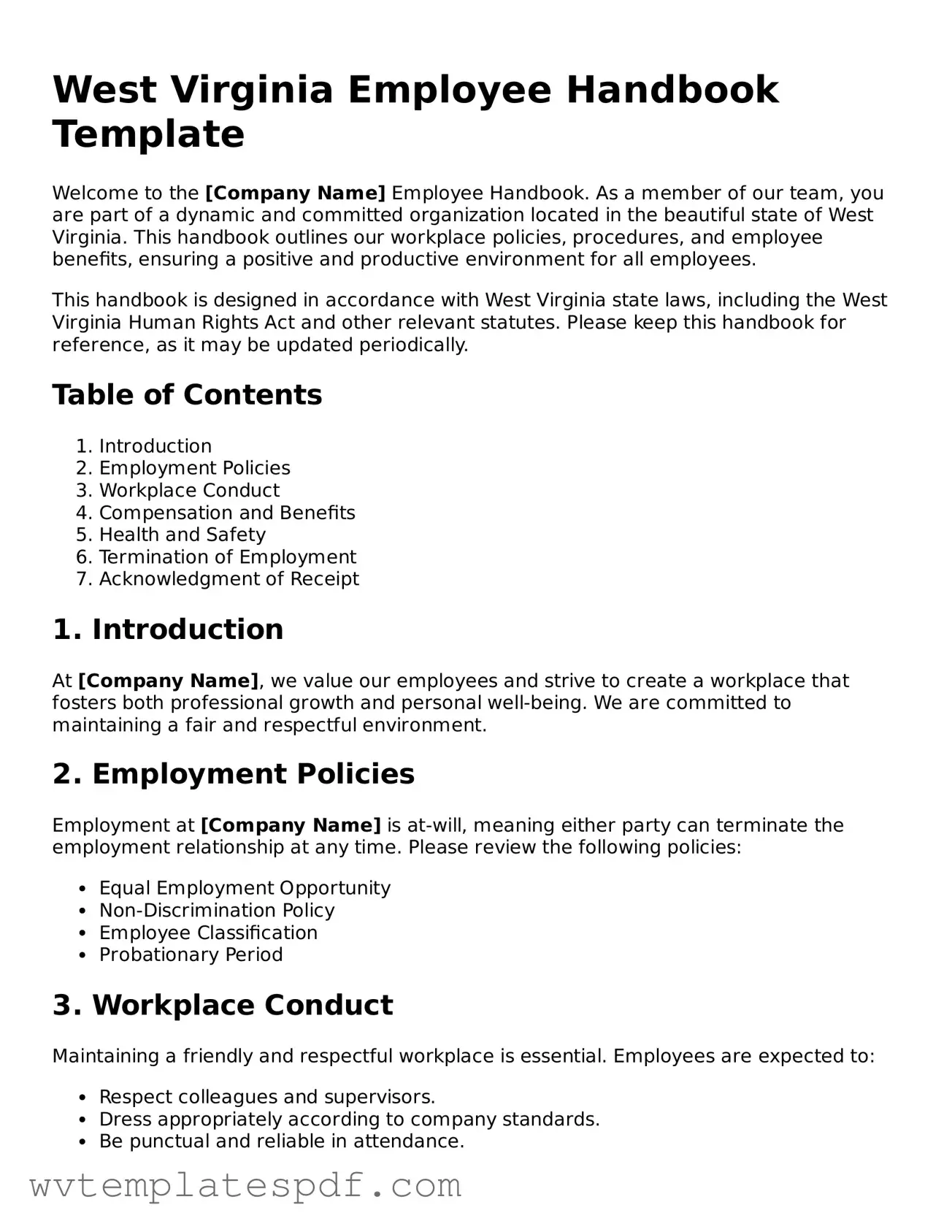Filling out the West Virginia Employee Handbook form can be a straightforward process, but several common mistakes can lead to confusion or delays. One frequent error is neglecting to read the instructions thoroughly. Many individuals assume they understand what is required without fully reviewing the guidelines, which can result in incomplete or incorrect submissions.
Another common mistake is providing inaccurate personal information. Employees may rush through the form and enter incorrect names, addresses, or contact details. This can lead to issues with communication and record-keeping, making it crucial to double-check all entries for accuracy.
Omitting necessary signatures is also a prevalent error. Some employees forget to sign the form or fail to date it. This oversight can render the form invalid, leading to complications in employment verification or benefits enrollment.
In addition, individuals sometimes fail to update their forms when their circumstances change. Life events such as marriage, divorce, or a change of address should prompt a review and update of the Employee Handbook form. Neglecting to do so can result in outdated information being on file.
Another mistake involves misunderstanding the company policies outlined in the handbook. Employees may skip reading the policy sections, leading to a lack of awareness about important rules and procedures. This can cause issues later if an employee inadvertently violates a policy they were unaware of.
Some people also rush through the form without considering the implications of their answers. For instance, failing to disclose relevant prior employment history or background information can raise red flags during the hiring process. Transparency is essential to build trust with the employer.
Moreover, using unclear or ambiguous language in the form can create misunderstandings. Employees should aim for clarity in their responses to ensure that their intentions are understood. Vague answers can lead to misinterpretations and potential issues down the line.
Lastly, not seeking assistance when needed can be a significant mistake. If there are uncertainties about how to fill out certain sections, employees should not hesitate to ask for help. Ignoring questions or guessing can lead to errors that could have been easily avoided.
